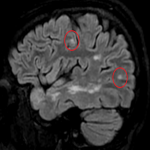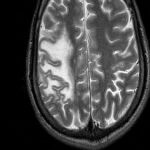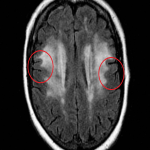Type:
Educational Exhibit
Keywords:
Anatomy, CNS, Neuroradiology brain, MR, Education, Education and training
DOI:
10.26044/ecr2022/C-14072
Background
The processing and transfer of information in the brain is achieved through a vast network of short-range and long-range connections between neurons.
These connections are established during brain development in a spatially and temporally regulated process comprising of neurogenesis, neural migration, synaptic formation, dendritic arborization, axonal growth and myelination.[1]
The U-fibers or short association fibers (SAFs) represent thin bundles of myelinated axonal fibers connecting neurons from adjacent cortical gyri, being located in the superficial white matter immediately deep to the gray matter with a parallel course relative to the cortical surface.[1-3]
The broad spectrum of white matter disorders can be grouped into three main categories, based on the underlying pathophysiological mechanism:
- Demyelinating diseases – destruction or damage to normally formed myelin or to myelin-forming cells (oligodendrocytes);
- Dysmyelinating diseases – abnormality in the process of myelin formation, deposition or destruction;
- Hypomyelinating diseases – permanent deficit in myelin deposition.[5,6]
Demyelinating diseases can further be divided in primary (idiopathic; prototype disease – multiple sclerosis) and secondary (vascular, infectious, autoimmune and toxic-metabolic causes).[5]
Two key elements of neurophysiology are necessary to understand the relative sparing of U fibers in certain white matter diseases:
- During brain maturation the U-fibers exhibit a slow pace of myelination, which remains incomplete until the 3rd or 4th decade of life in certain regions of the brain, explaining their relative sparing in disorders of myelin metabolism.[1,2]
- The leptomeningeal arteries form an extensive superficial network of anastomoses providing the juxtacortical regions with a protective collateral blood flow, being better vascularized compared to the deep white matter, which is more vulnerable to chronic ischemic small vessel disease.[7,8]























